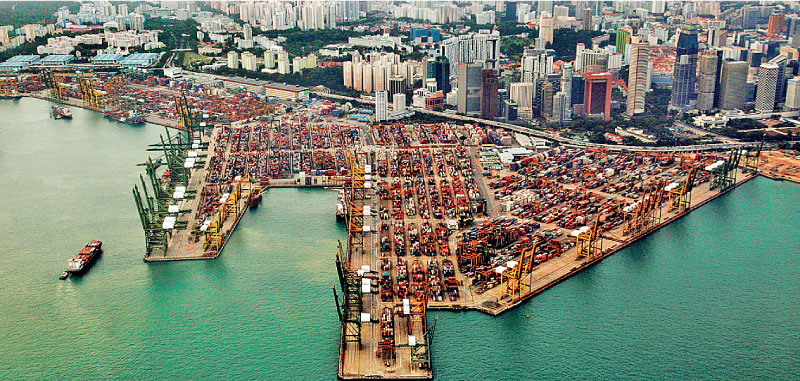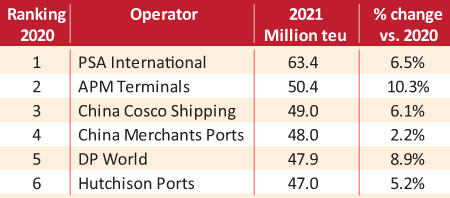Monday Apr 21, 2025
Monday Apr 21, 2025
Tuesday, 16 August 2022 12:59 - - {{hitsCtrl.values.hits}}

 Processing 63.4 million TEU last year, PSA International was tailed by APM Terminals (which saw a massive 10.3% increase in box throughput) and COSCO Shipping, processing 50.4 million TEU and 49 million TEU respectively.
Processing 63.4 million TEU last year, PSA International was tailed by APM Terminals (which saw a massive 10.3% increase in box throughput) and COSCO Shipping, processing 50.4 million TEU and 49 million TEU respectively.
Global container port capacity is projected to increase by an average annual rate of 2.4% to reach 1.38 billion TEU by 2026, according to Senior Analyst Eleanor Hadland.
However, the worsening economic and geopolitical situation has led to a downgrading of the cargo demand outlook, and as a result container port utilisation is now projected to moderate to 70% in 2025 compared to Drewry’s 2021 projection of 75%.
While the majority (70%) of terminal operator investment plans remain focussed on existing assets, there has been a “notable increase in the number of greenfield projects,” Hadland notes – with CMA Terminals, Hutchison and TIL all expected to add 4 million TEU or additional greenfield capacity by 2026.
Eleanor Hadland commented: “The renewed appetite for greenfield projects shows improved confidence in the market outlook. However, the ability of CMA Terminals and TIL to secure volume guarantees from CMA CGM and MSC gives these companies an advantage over non-carrier affiliated operators.”
Global supply chain disruption resulted in increased cargo dwell times in 2021 which generated additional storage charges, lifting terminal operators’ revenue growth above that which could be justified on the basis of volume recovery alone.
Port congestion does not appear to have adversely impacted financial performance, despite the widespread decline in productivity levels.
The revenue raising mechanisms (i.e., paid-for overtime, storage charges) have so far proven to be sufficient to offset the additional congestion-related operating costs, Hadland writes. Operators also cite the continuing cost control measures implemented in response to COVID as having a positive impact on margins.
“Once global supply chain disruption eases, which is now expected in 1H23, there is heightened risk that revenue gains will retreat as dwell times return to pre-pandemic levels,” added Hadland.
Capital expenditure bounced back in 2021, rising 31% year-on-year.
In general, favourable terminal operator financial performance has translated into robust balance sheets. With the exception of COSCO Ports and ICTSI, net debt fell, leading to a reduction in net gearing by 8.5 percentage points to 54.7%.